How do I clean the toilet?
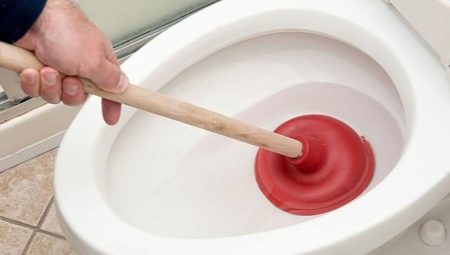
In an apartment or house, an unpleasant situation often arises with a clogged toilet. A disaster can be caused for many reasons, and it is common for homeowners to damage the sewer system. To fix this problem, you need to familiarize yourself with the rules and methods for quickly cleaning the toilet at home.
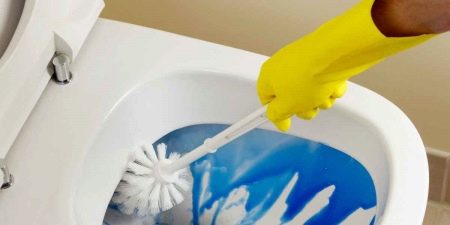
Signs and causes of blockage
There are the first signs that warn that the sewer structure is clogged. If one of the following signs is found, it is necessary to urgently eliminate the blockage without further aggravating the condition:
- the toilet bowl is filled with dirty liquid with feces, which has returned from the sewer and is not flushed into the general sewer pipeline;
- delayed descent of water through the sewer system;
- unpleasant odors from sewer pipes.

To determine the method of cleaning the toilet bowl, what to do in this situation, experts recommend that you familiarize yourself with the main causes of blockages in sewer pipes.
- The system was mounted with defects. When the sewer pipe is installed at a low angle, there is poor flushing of waste, as a result of which waste residues gradually accumulate, forming a blockage.
- Organic residues... Often food waste is flushed down the toilet: porridge, mashed potatoes, peeling apples, and others.
- Household waste: toilet paper, stationery, bags, hygiene items (pads, diapers).
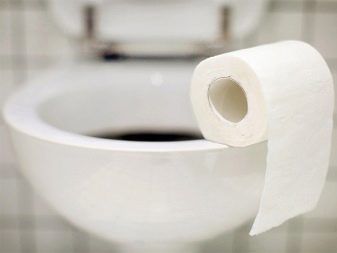
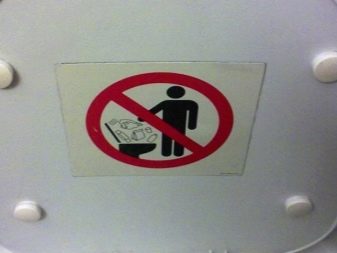
- Cat litter (tray)... Modern manufacturers make fillers with the addition of special clay, which is capable of retaining and absorbing moisture.When clay enters the sewer pipe, a constant accumulation of the clay mixture in the channel occurs.
- Lack of ventilation... In order for the sewer structure to work correctly, there must be enough air in the riser pipe. With its lack, the rate of passage of the liquid through the pipe decreases, further leading to blockage.
- Improper operation toilet bowl neighbors above or below in an apartment building.
- Salt deposits in toilet pipes. This can happen for many reasons: hard water, urea, waste sludge.
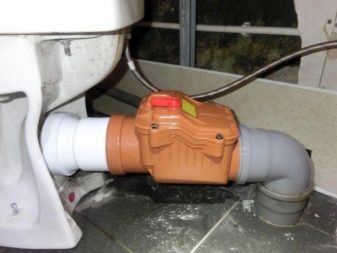
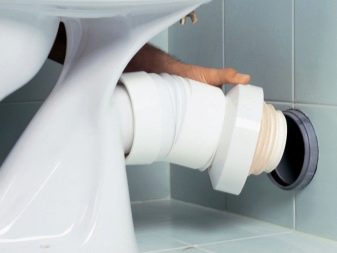
Determine the location of the cork
In order to correctly determine the place of the plug, as well as what exactly is clogged, it is necessary to check the functionality of the taps, which are located in the bathroom and in the kitchen. If the liquid flows without much difficulty, it means that the problem is a blockage in the toilet. If the water goes down poorly, then the reason lies in the main pipe, in this case you cannot do without the help of a specialist.
By means of a general drain, you can find the place of a blockage in the sewer pipe. It is necessary to determine the place of the cork with extreme care and adherence to all the rules.
After determining the location of the blockage, you can begin to eliminate the problem. The way to remove the plug will depend entirely on the cause of the blockage.
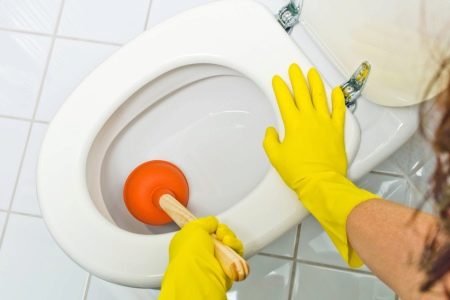
To understand what exactly gets clogged in the toilet, you need to familiarize yourself with the standard plumbing device, which consists of:
- drain gap;
- siphon;
- a tube with a supply to the riser;
- riser.
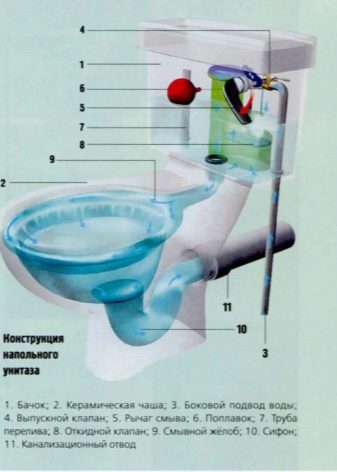
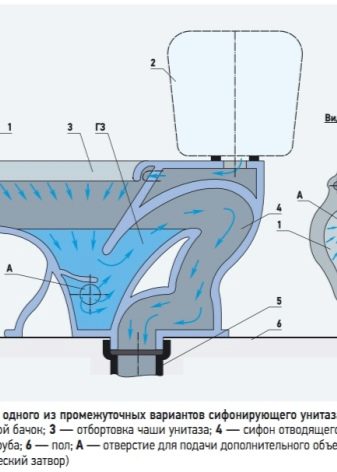
Any of these areas can become clogged. To determine the level of clogging of the toilet with your own hands, you can pour 1 liter of water into the toilet and leave it for 30 minutes. After that, you need to check whether the water has left or not. If you left, then you can cope with such a problem at home without the help of a specialist.
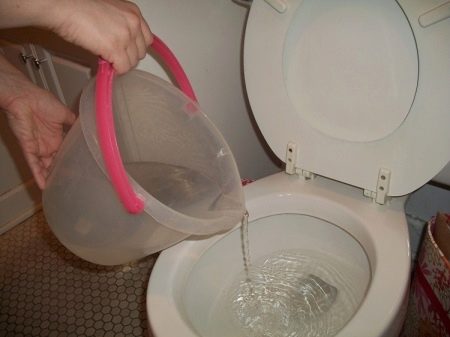
Remedies
If the toilet is clogged, the owners of the house or apartment try to get rid of this problem as quickly as possible.
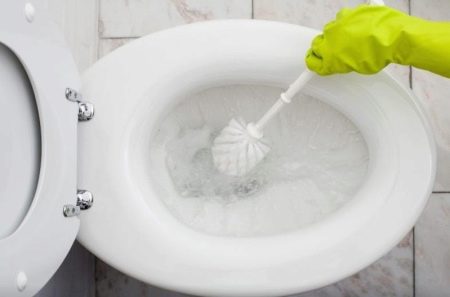
Folk
The first way to clear the toilet from simple blockages is to use boiling water.
- Boiled water (10 liters) at an angle of 90 degrees must be poured into the toilet. It is recommended to pour water as quickly as possible.
- If the liquid starts to leave, then this procedure must be repeated 1-2 more times.
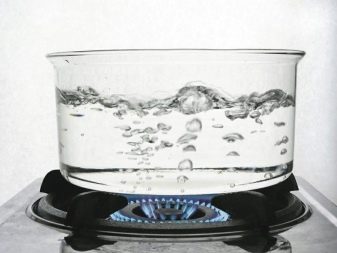
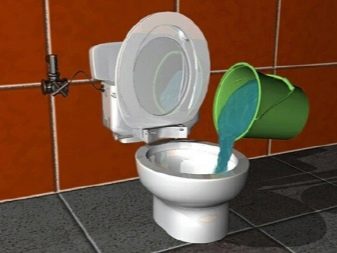
The next method is to use baking soda, which helps to dissolve minor blockages in the form of a fatty film:
- 250 g of soda must be poured into the toilet bowl;
- wash off the water after a few minutes.
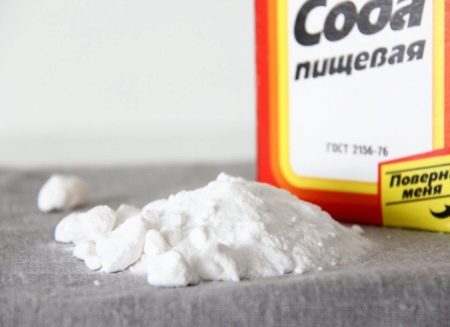
The third method is based on the use of boiling water, vinegar and baking soda. Such a solution is able to cope with cling film in the toilet bowl opening.
- First you need to get rid of the water in the toilet. To do this, scoop out the liquid with a ladle or a rubber bulb, leaving a small amount in the drain area.
- Pour 250 g of soda into the toilet, try to push it deeper.
- 1 cup of 9% table vinegar is poured into the drain.
- After 20 minutes, you need to pour boiled water of 100 degrees. You can do without boiling water, soda and vinegar just need to be washed off.
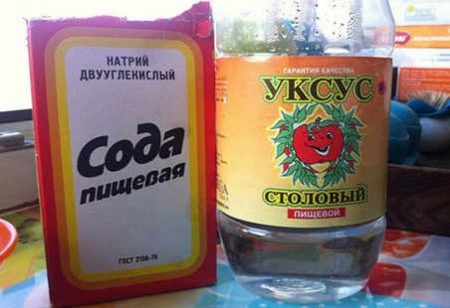
If the sewer system is equipped with a connecting corrugation, which is made of thin plastic, then the use of boiling water is strictly prohibited.
It is better to use hot water for this purpose. Also, boiling water is prohibited for cleaning a porcelain toilet, such material will not withstand sudden changes in temperature.
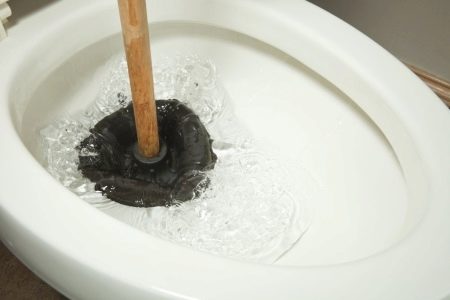
There is another popular way to remove the blockage, which is done with mustard powder.
- Dissolve 5 teaspoons of mustard powder in 10 liters of hot water.
- The prepared solution is poured into the toilet.
- After 1–2 minutes drain the water.
- If necessary, you can repeat this procedure.
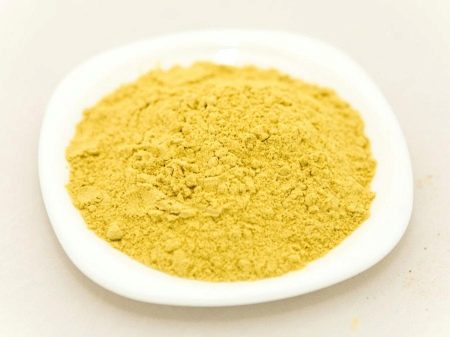
Many housewives use Coca-Cola to quickly and effectively break through the toilet plug.This drink is not only a tasty liquid, but also an excellent cleaning agent for combating plaque, due to the fact that the drink contains carbonic acid and phosphoric acid. It is very easy to use, just open the bottle and pour the contents into the toilet. After 10-15 minutes, it will be possible to observe how the pipeline is cleared of the blockage.
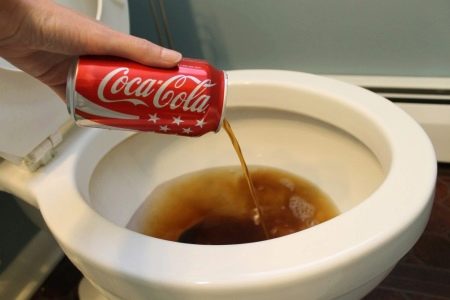
Often, homeowners face the problem of blockage due to the fact that multilayer toilet paper accumulates in the sewer system. This level of cork can be dealt with with citric acid and washing powder, and this mixture will also rid the toilet of rust and yellow spots.
- Dissolve 1 cup of powder in warm water.
- Two packs of citric acid are poured into the resulting solution.
- The finished mixture is poured into the toilet, leaving for 4-5 hours (overnight).
- After a certain time has passed, several buckets of hot water are poured into the toilet. This procedure is necessary in order to wash off the cleaning agent and the remaining blockage.
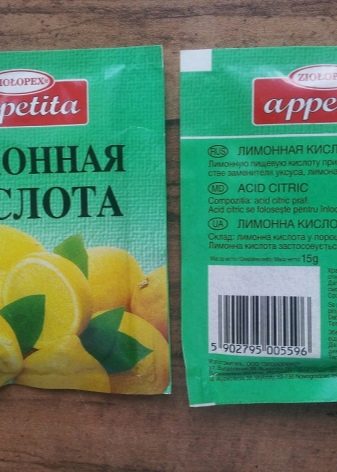
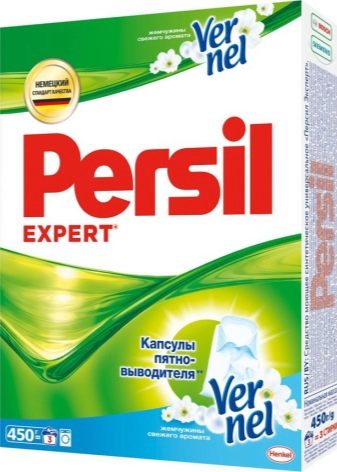
Chemical
Today, store shelves have a huge range of finished chemical products that can cope with various degrees of toilet blockages without the help of a plunger and cable. Such chemicals that contain alkali or acid are in great demand.
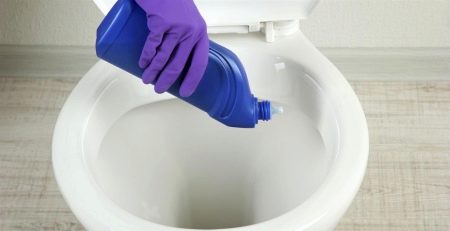
Such substances are able to dissolve blockages from small debris; they are available in the form of powder, gel, liquids and in a granular state.
- "Mole". It is made by many manufacturers and is very popular with homeowners. The cleaning agent is available in granules, gels, and consists of 60% potassium and sodium hydroxide, 10% vinegar essence and 10% surfactant. The tool has an affordable product price, but the duration of the blockage remover varies from 1 to 2 hours.
- Tiret. This cleaner is suitable for all types of pipes. The gel solution works within 5 minutes, but tricky plugs may take longer to clear.


- "Mister Muscle". The main advantage of this cleaning agent is the instant action of the drug; it will cope with minor blockages in a few minutes. This is due to the fact that the composition has a large amount of acids and alkalis. It takes about 2 hours to dissolve difficult-to-dissolve blockages. The drug is available in the form of a gel or powder.
- "White". The alkaline cleaner will clean and corrode debris that has accumulated in the drain hole. The solution action time varies from 4 to 6 hours.
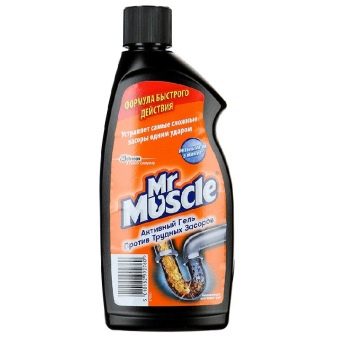
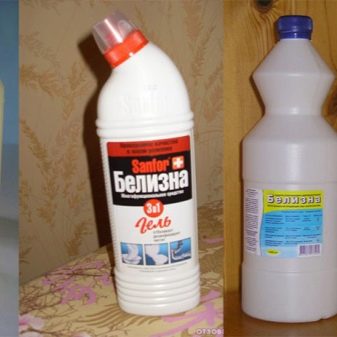
- Comet. The composition of such a solution has chlorine-containing components that are able to quickly remove blockages in the form of limescale, urinary stones. The use of the solution allows you to get rid of the unpleasant odor from the sewer pipe.
- Deboucher. It is a cleaning agent that contains not only alkali, but also a chlorine substance. The action of the remedy occurs within 15-20 minutes. Despite the fact that the substance contains chlorine, it does not have a sharp specific odor. The disadvantages of this tool include the inefficiency of the gel solution. To effectively deal with the blockage, you will need 0.5 liters of the product. It is forbidden to use mortar for aluminum pipes.
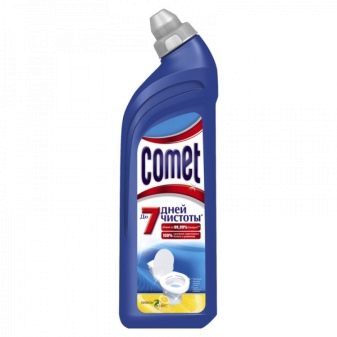
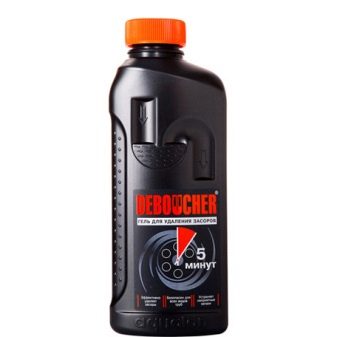
Battery electrolyte also belongs to acidic substances. The electrolyte is used as a powerful chemical agent.
Before using chemical solutions, it is necessary to study in detail the instructions on the packaging for the use of a particular product.
When working with chemical solutions, it is recommended to use protective equipment (rubber gloves, goggles). Some abrasive substances, getting on the skin or in the eyes, will corrode the integument and burn the eyes.
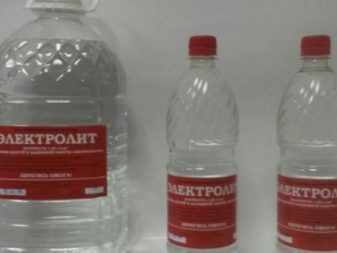
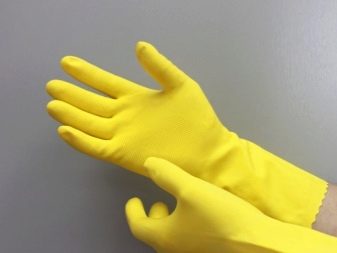
To eliminate blockages with household chemicals, the following procedures are performed:
- the required amount of solution (according to the instructions) is poured into the toilet bowl drain, which is previously emptied of the liquid;
- after a certain period of time (1.5–2 hours), the substance is washed off with a stream of hot water.
It is forbidden to use several types of chemistry at the same time, otherwise a chemical reaction may occur that can harm the sewer structure. It is also necessary to use potent substances ("Mole", "Ruff") with extreme caution, they can corrode plastic pipes.

Lime deposits can accumulate not only inside the toilet, but also in the cistern. Acidic or alkaline solutions can be used to clean the tank. Toilet pills are an effective and effective way to remove plaque. They fit inside the tank, gradually dissolving in water. Subsequently, the plaque dissolves not only in the cistern, but also in the toilet.
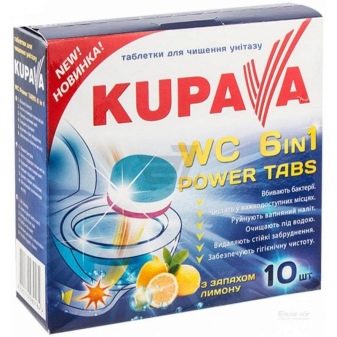

Precautions for using chemical solutions.
- The use of solutions is allowed only with the use of protective gloves, preventing the occurrence of allergic reactions.
- Dosing solutions should be performed according to the instructions. Excessive amount will not solve the blockage problem.
- After cleaning the sewer system, it is necessary to thoroughly rinse the toilet bowl from chemical residues so that the solution does not get on the skin in the future.
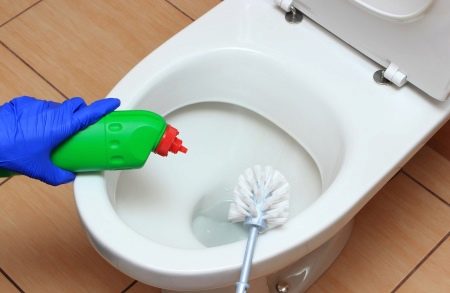
Mechanical method
Mechanical blockages are most commonly used by homeowners. Various tools at hand are used for cleaning. It is impossible to cope with blockages from sand, glass and building contaminants on your own using folk or chemical methods; here you need the help of mechanical devices.
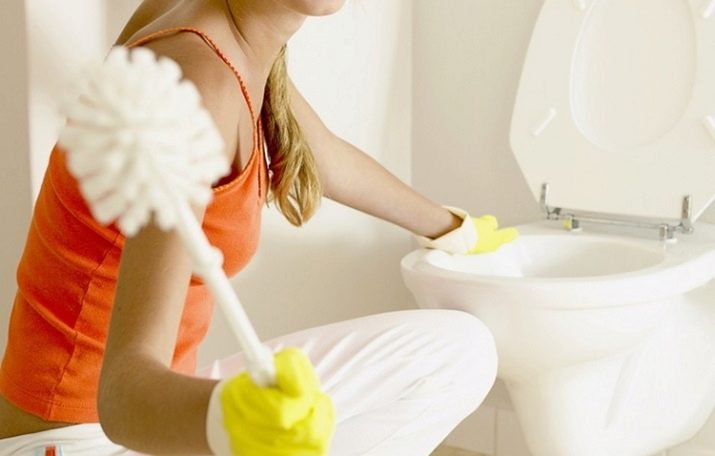
To get rid of such traffic jams, several methods are used.
- The first mechanical way to remove the plug in the toilet is manual cleaning... It is used if the plug has formed no further than the siphon. For this purpose, you will need such devices as rubber gloves, a bucket, a ladle. The toilet bowl is preliminarily emptied of liquid. Then they begin to examine the drain hole by hand. If it is impossible to remove the blockage by hand, you can use a wire with a bent end.
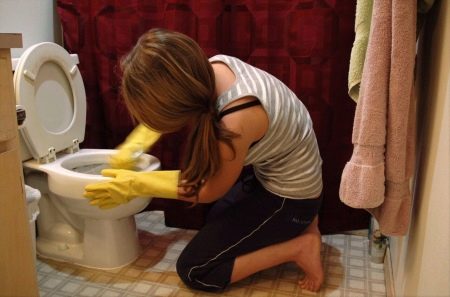
- Ventuz, which is a rubber suction cup with a handle. With a plunger, you can push the debris that appears in the drain hole further into the common sewer pipeline. The sewer pipe is larger in diameter than the drain hole, allowing debris to escape further. Before using the plunger, you must close all the washbasin taps in the bathroom and the kitchen sinks, and only then start cleaning the toilet. It is also necessary to take into account the fact that the rubber part of the plunger must be larger in diameter than the drain hole, thereby creating a vacuum and water hammer.

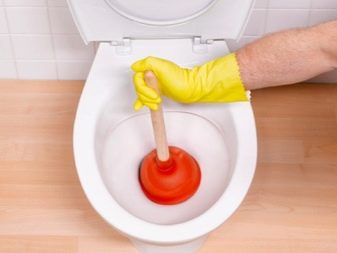
If the drainage duct is obstructed throughout the apartment or house, then the procedure using a plunger must be performed at all drainage points. In this case, the toilet lid must be closed and fixed with a heavy load so that the liquid does not escape from the toilet under pressure.
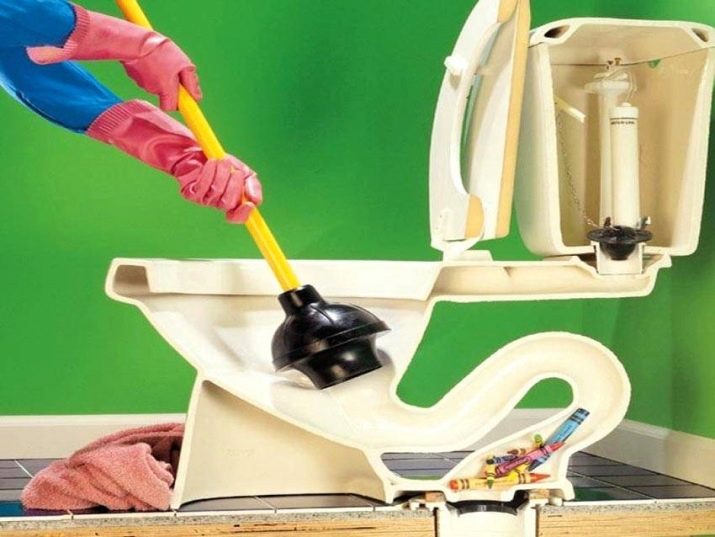
- Plastic bottle with a volume of 1.5 liters can more effectively deal with blockages than previous folk and chemical methods, and it can also replace a plunger. The bottle method is similar to the plunger method, but the impact power and pressure are many times stronger.
Clean the toilet with a bottle by doing the following:
- the bottom of the bottle is cut off, but the cork remains in place;
- the bottle is lowered with the cut end into the opening of the toilet bowl as deep as possible;
- with a few sharp movements, you need to drive the bottle inside the drain hole.
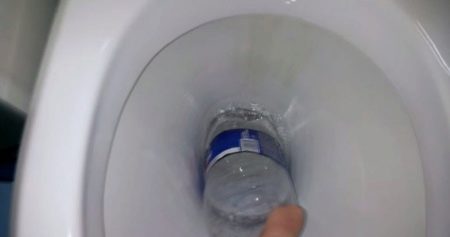
- Plumbing cable, which has a handle and a nozzle. The size of the cable can vary, the diameter is from 6 to 16 mm, and the length is up to 60 m. A 5-meter cable with a nozzle is suitable for an apartment.A spiral-shaped nozzle is used to remove debris, and a weight-shaped nozzle for punching. Follow the steps of using a wire rope to remove the plug yourself.
- The end of the cable with the nozzle is lowered into the drain hole and the handle is rotated clockwise.
- The cable is pushed as deep as possible, it is advisable to reach the plug in the knee of the toilet bowl.
- With a rotating movement, the plug is pushed into the common pipeline or hooks onto the nozzle and is pulled out.
- After all procedures, the cable must be washed with detergent, in the future it may still be needed. After punching the plug with a cable, it is necessary to secure the achieved cleaning result; for this, the use of chemical solutions is suitable.
It is forbidden to push the cable with sudden movements, as such blows can harm old sewer structures.
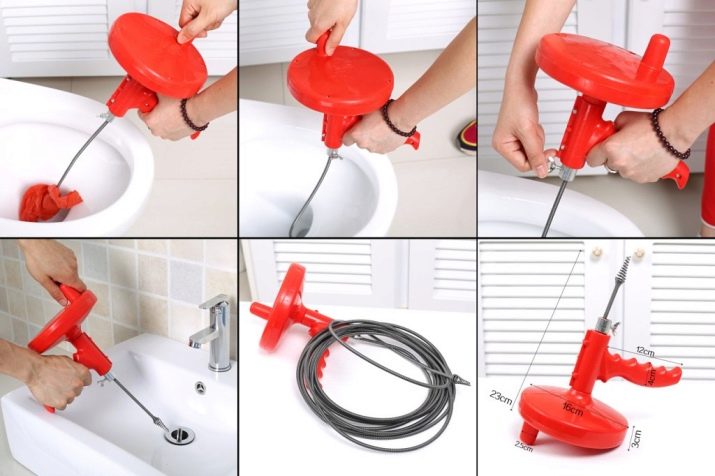
- Instead of a cable, you can use bent wire... Household items cannot be pushed into the common pipeline, otherwise they can get stuck in the riser and cause water to break through from neighboring residents.
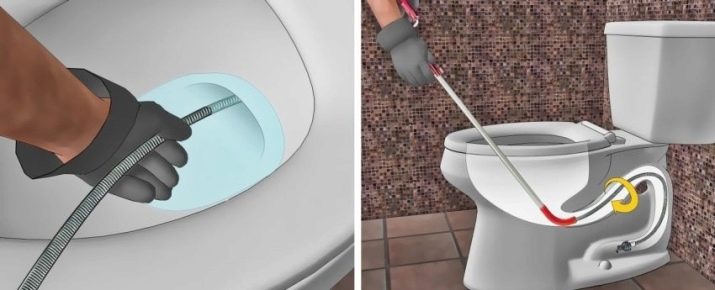
- There is another effective method that can clear up a toilet blockage. For this method, use double-sided tape and plastic wrap. It is important that the film is in perfect condition without defects, and the size is slightly larger than the toilet lid. Follow these steps:
- the area inside the toilet is wiped dry;
- strips of adhesive tape are glued in a circle so that a continuous film coating is formed;
- the surface of the toilet is covered with a film, which is fixed at the points of contact with the tape, as a result of which a hermetically sealed space is formed inside the toilet;
- then it is necessary to drain the water. When done correctly, the film should swell. If not, check the film coating for integrity;
- the surface of the film must be pressed down by hand so that it returns to its original state. These movements create pressure on the toilet and the blockage is cleared.
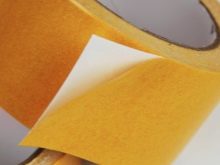
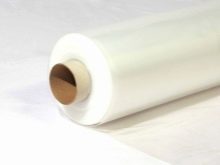
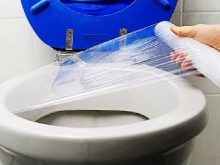
- A home-made improvised tool can cope with a blockage in the drain pipe. It is made from a cloth bag filled with a free-flowing mixture (sand). Such a device is popularly called a doll. The finished bag is tied to a strong rope or string, with which you need to hold the doll in your hand. The bag is lowered to the bottom of the toilet, and I turn on the flush. The liquid pushes the bag down the drain hole, which allows the resulting plug to be pushed through.
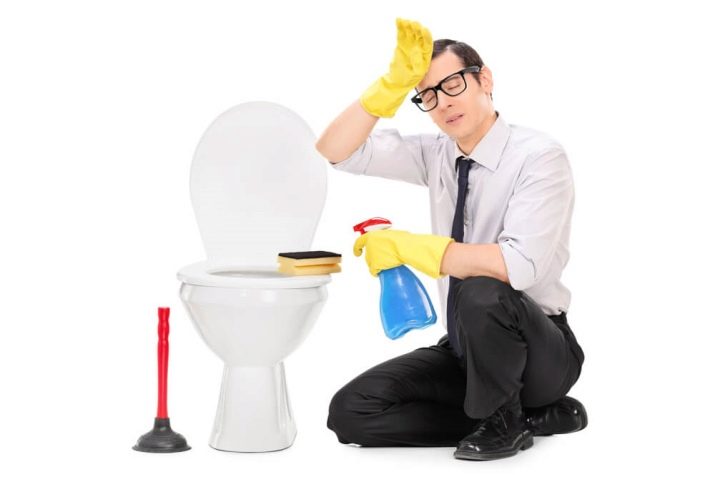
When to call a plumber?
An emergency call for a plumber is necessary if the level of dirty liquid in the toilet, sink and bathtub gradually builds up. This could mean that a blockage problem has formed in the common piping. In the future, fluid will leak out of the sink or toilet bowl. It is urgent to shut off the water, ask the neighbors not to use the sewer system. This problem cannot be solved independently with the help of improvised means or household chemicals, only professionals can cope with such a problem.
It is also necessary to call professionals even if all of the above methods for eliminating blockages at home did not cope with the problem in the toilet. After all, problems with the toilet can lead to a complete replacement of the sewer structure.
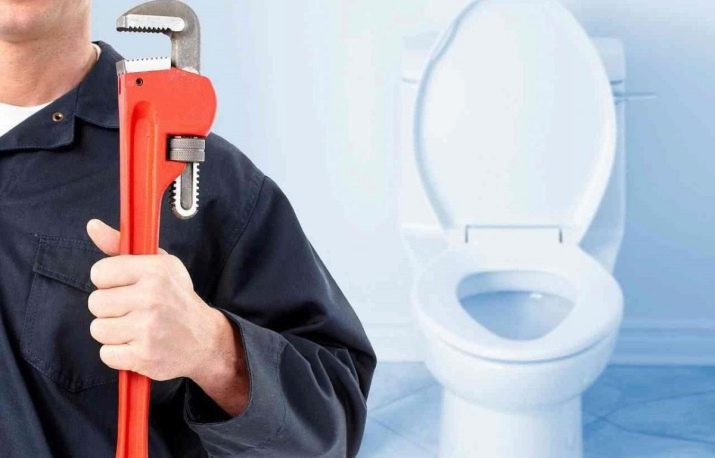
Prophylaxis
To avoid or prevent serious toilet blockage problems, it is necessary to regularly carry out preventive actions to prevent the formation of traffic jams.
- It is forbidden to use the toilet as a waste chute. After a certain period of time, a plug forms. You also need to warn young children about the rules for using the toilet.
- From time to time, you need to clean the toilet with chemical solutions.
- The sewer system must be flushed with hot water once a week.
- Some sewer systems are equipped with a background riser, which requires constant performance checks.
- It is necessary to carry out repair work in the toilet with the toilet closed so that building materials do not get inside.
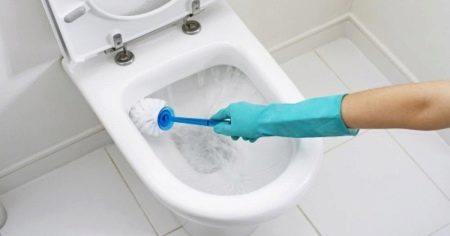
- When installing a sewer system, it is better to opt for plastic products that have a smooth inner surface of the walls. It is also necessary to adjust the pressure with a waste pipe. Due to the incorrect position of the pipe, water can drain poorly, as a result of which small blockages will gradually accumulate on the walls of the pipeline, forming a plug.
- It is better to entrust the installation of a toilet bowl to professionals who will carry out the installation in accordance with all operational rules.
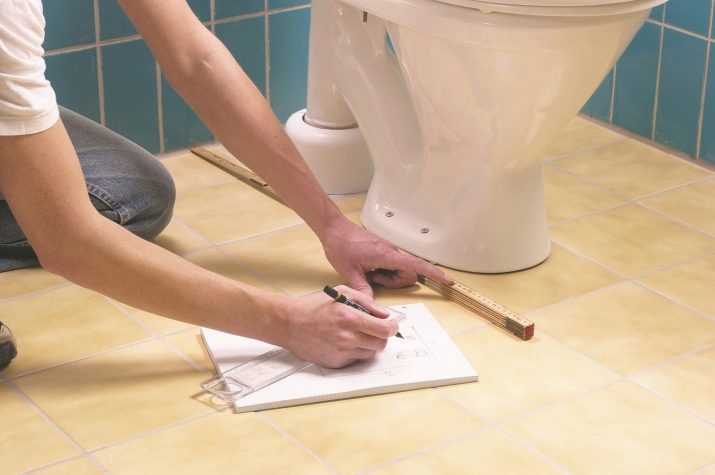
Additionally, you can use edible salt as a preventive procedure.
Every day, at night, pour 1 glass of salt into the drain hole. Interacting with water, a saline solution is obtained, which perfectly eats away fat deposits on the inner walls of the pipeline. In the morning, flush the toilet with water.
If you take preventive actions, you can eliminate the possibility of clogging the toilet. A correctly selected method of removing the blockage will allow you to quickly and easily solve the problem that has arisen.
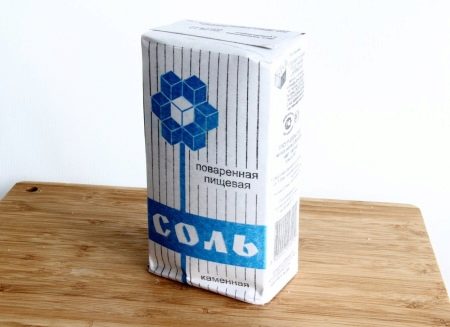
For information on how to clean the toilet with a bottle in 1 minute, see the video below.








